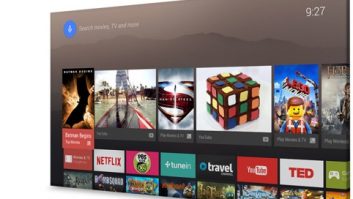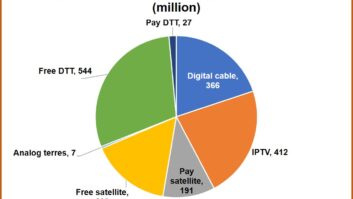The definition of TV has become ambiguous as consumers find different ways to engage with different types of content. According to findings from our Thinking Inside the Box research, 86 per cent of UK consumers feel that what they consider TV to be has changed over the past five years. And, while the majority (74 per cent) say BVoD is TV and 53 per cent include SVoD in their definition, 9 per cent and 4 per cent respectively now include YouTube and other online social platforms.
With the rapid expansion of the definition and, as consumers are increasingly able to watch TV on any device anywhere, anytime, it’s logical to think that the traditional TV set in the living room is finally doomed. Or is it? During the height of lockdown in the UK, the population spent an average of six hours and 25 minutes watching TV and online video every day according to Ofcom. Yet of those 386 minutes, only 50 were not on a TV. Our research correlates with these findings – 85 per cent think they will always have a TV in the home.
However, there’s no denying that how we consume TV and video content is changing and that means broadcasters, other TV and video media owners, and advertisers need to consider how they reach consumers most effectively. There are three main factors to consider.
Why consumers watch a particular type of content
The findings clearly show that different content types fulfil a range of consumers’ needs. For example, 62 per cent of those looking to relax turned to scheduled TV. This mindset fits with our traditional views of TV, it’s the opportunity to switch on and switch yourself off. This mindset increases the more time we spend watching TV. When asked if they could only choose one form of video consumption, 30 per cent chose TV if watching for up to an hour, but that increased rapidly the longer they wanted to watch, with 72 per cent opting for scheduled programming if they planned to watch for 5-9 hours.
Conversely, YouTube isn’t seen as a relaxation method; only 37 per cent choosing it do so. However, it is seen as an education tool to 39 per cent vs only 27 per cent for TV, indicating the wish for short form content on the platform. What’s clear is that both formats have a different role to play in people’s lives, and both media owners and advertisers need to recognise those nuances as part of their business strategies.
What content they trust
High production is seen by many as the mark of quality, a view ingrained by TV. Some 74 per cent of respondents consider BVoD, with professional production value, to be ‘quality content’ vs only 57 per cent for online video. An interesting result of the research is that quality and trust go hand-in-hand, with 75 per cent considering BVoD trustworthy vs 57 per cent who think online video is. Anecdotal feedback included quotes like this: “People would say, ‘Well this is the BBC news so this is really reliable and trustworthy versus if you Google and there’s a YouTube video of some guy telling you what happened in Glasgow today, well, who would you believe more?’ So I think that TV would say that they’re like a more well established platform.”
The research also found that, of those open to advertising, 59 per cent trust in TV advertising, significantly higher than radio (6 per cent), cinema (9 per cent), press (11 per cent), out of home (9 per cent) and online (6 per cent). It’s clear therefore that, while online and social video has its place, TV whether it’s linear or on-demand, is seen as a source of trusted and high-quality content, making it a logical home for advertising.
The personalisation conundrum
Traditionally, and rightly, TV, especially linear, is seen as an effective tool for mass reach, and while the broadcasters offer regionalised audience segmentation (and more on BVoD), that doesn’t match the hyper-targeting that’s available to brands via other digital channels. However, that isn’t always a good thing for consumers.
While technically easy online, personalising ads to consumers causes controversy. Over half (52 per cent) described personalised advertising as intrusive, and many point to online and social media ads as examples that have engendered feelings of mistrust, annoyance and a sense of “big brother watching them”.
TV is seen as completely different. Instead of a one-to-one relationship, it’s viewed as a place for more generalised ads intended for the masses. However, as more TV becomes available to view via the internet that can change, but it needs to be done correctly. Our research indicates that highly personalised targeting isn’t the right approach for viewers. Instead, advertisers can look at alternative mechanisms, via addressable advertising, where relevance rules over personalisation, and household or postcode over the individual.
With one in three stating they would be more likely to view TV ads if they were relevant to them, there are many different factors that advertisers need to consider when developing campaigns. Particularly for those brands considering launching into TV, it’s important to treat it differently from online video. The creative production value, targeting, type and quality of content the ad runs alongside are crucial elements they need to incorporate if they want to reach and effectively engage with consumers.
It requires a subtle approach that necessitates understanding and respecting the fine line between an ad that’s helpful and relevant vs one that’s a bit creepy, interrupting or off-putting. But by striking the right balance, advertisers can experience the amazing returns of TV with its unrivalled power to connect and engage with consumers at scale.






